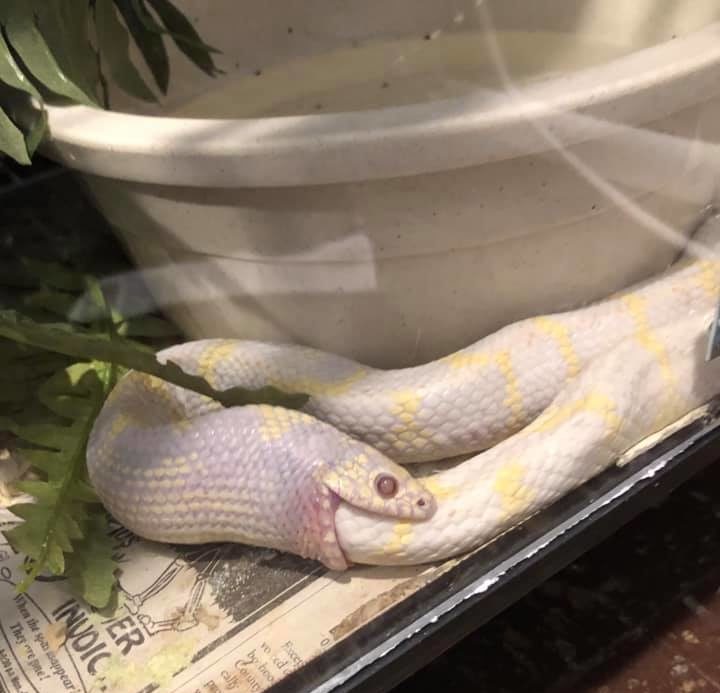The Snake Haus East location houses all of the colubrids. There are eight of them currently under the care of Nicky and her family at our other location. Many of them are still in training for behavioral problems but all are improving quickly under the right care.
There are many different types of snakes in the Colubrid family. The corn snakes are the most common in rescue, however there are also King and Milk snakes there.
Corn Snakes – Pantherophis guttatus

Corn snakes are one of the most common pet snakes in the trade. They have spectacular color morphs available and don’t need a lot of space to be kept relatively happy. They are generally docile, though tend to be more adventurous than the ball pythons. They hatch at about 8 inches long but at full size can be 5-6ft. Corn snakes are slim bodied making them proportionally lighter in weight than most pythons of the same length. In the wild corn snakes typically live to be 5 to 7 years old. In captivity corn snakes can make it into their 20s so these guys (well, really any animal) shouldn’t be an impulse buy.
The reason behind the name “corn” snake carries a little ambiguity with it. One thought is that their natural habitat tended to be near grain mills where there was an abundance of mice eating the corn. Another thought is that they got their name from the their cute patterning on their undersides that resembles an ear of corn. Either way, we love our corns!
Kings and Milks – Lampropeltis spp.

This Lampropeltis group includes the kingsnakes and milksnakes. Native to the Americas from Southern Canada to Ecuador, these guys come in a great array of colors and patterns that make them popular pets. They also are not considered large snakes, with some species only getting to be about 2ft in length. As with the name “King Cobra”, the name King refers to the fact that kingsnakes will eat other snakes. It is thought that kingsnakes can exert twice as much constriction force relative to body size as an adaptation to having reptiles as a major food source.
Some milk snakes use Batesian mimicry in that they look very similar to the venomous Coral Snake, a good thing for keeping things from eating you, but not so good when people think you are a Coral Snake. In other areas, they resemble pygmy rattle snakes or juveniles can resemble copperheads. As pets, these guys can be a little opinionated and more flighty than their cousins, the corn snakes. Still, with proper socialization, they can adapt well to life as our companions.
Rat Snakes – Elaphe obsoleta lindheimeri

Meet the Snake Haus Colubrids below!
Corn snakes
King Snakes
Milk Snakes
Rat Snakes
Beware the Cannibal
King snakes! Man they’re something else!
You may have heard that King snakes are cannibals – they prey on other snakes. That is their niche in nature. Because of this they have some pretty amazing adaptations such as more strength for their size than other snakes. Unfortunately, when agitated they have been known to make pretty bad decisions.
This doofus needed immediate help yesterday at our Snake Haus East location because he mistook his own tail for food. This can happen sometimes when they are agitated, stressed, or too warm.
This particular individual is a new arrival undergoing fairly intensive treatment for a severe hemipene abscess. So, he has good reason to be agitated, and since treatments are starting to work, he is feeling better and he’s hungry! Oops! Dont eat that ya doofus! Here have a mouse instead. Sheesh that was a close call. Nice work Nicky for intervening just in the nick(y) of time and getting him sorted out and safe.
For the record – real life Ourobouros are not recommended.


